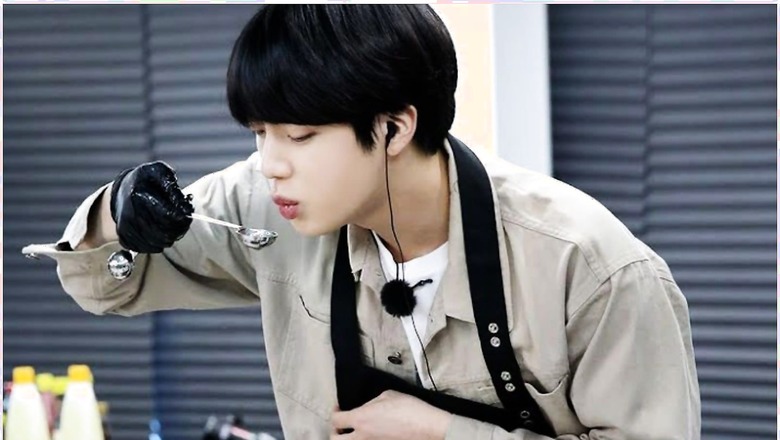
views
The kitchen is a crucial part of any home, and in recent years, there has been a growing trend among younger generations to prioritize home cooking. The pandemic further emphasized the benefits of cooking at home, such as improved health, cost savings, and reduced food waste. This trend is reflected in the statistics, with 59% of 25-34-year-olds using their smartphones or tablets in the kitchen while deciding what to cook, learning how to prepare it, and actually cooking. This highlights the importance of technology in the cooking process for this demographic.
The kitchen in urban India has undergone a significant transformation in recent years, evolving from a cramped, smoky, and enclosed space to a sleek, clean, and modern open area. This change is driven by a growing focus on aesthetics, health, and experimentation among millennials, who are increasingly cooking at home. The trend is reflected in the design and features of modern Indian kitchens, which prioritize functionality, cleanliness, and style.
Here are three trends that have contributed to this generational trend:
- Health and lifestyle
This generation is more cognizant of the impact of food choices on their overall health and well-being, driving them to prepare meals at home with fresh, whole ingredients and avoid processed food. “An increased interest in new diets, including plant-based ones, proves that millennials are experimenting with new foods and cooking styles. They are trading in their food delivery apps for cooking at home which is further catalysed by the easy accessibility and increasing dependability of grocery delivery services, which has made a wide variety of ingredients accessible. They’ve caught on to the fact that the secret ingredient to a healthier lifestyle is in their own kitchen, and they’re not afraid to experiment with new recipes and cooking styles to achieve it,” says Mahek Mody, Co-founder Up⤴️.
- Social Media
Media and social media in particular, has had a key impact in the trend of millennials cooking at home. Post-pandemic, social platforms such as Instagram and YouTube have provided an unending supply of visual stimuli for food-related content, with many young people getting meal inspiration from the food bloggers, chefs, and home cooks they follow.
Also Read: Ways To Don ‘Viva Magenta’ The Pantone Colour 2023 For the Wedding Season
Archit Agarwal, Delhi based food blogger says, “The pandemic has indeed changed people’s relationship with food. It moved from a one-off fun activity for many to an essential life-skill. People from different walks of life could now relate to a piece of content and got the agency to make it themselves. As a food content creator, I focused on building recipes and showcasing them through my website and Instagram handle. Before the pandemic, my website would have about 1,000 unique visitors a month. By July 2020, that number was close to 10,000. Similarly, the pandemic helped my followership grow on Instagram as well. Before the lockdown, I had 15,000 followers on Instagram. Today, I have 75,000.”
The pandemic brought us Dalgona coffee and Feta Pasta, proving that for millennials, the internet and social media are a recipe for culinary success, expanding their palates and cooking skills beyond the traditional cookbook.
“What is interesting is that while the pandemic created a culture of cooking due to necessity, today its conditioned many people to actually look at cooking as an activity they want to pursue at home. It’s built a cultural shift, and it’s exciting to think that I might have nudged someone to cook at home instead of ordering online,” adds Archit.
3. Movies and OTT Content
TV shows and food-based OTT content have the power to inspire viewers to try new and exciting dishes in the kitchen, helping them rediscover the joys of cooking and eating their own meals. Korean dramas such as ‘Kimchi Family’ have played a significant role in promoting Korean food and culture globally. Similarly, the paleo diet has gained popularity, in part, due to its depiction in shows like ‘Caveman’. “Characters like Remy in ‘Ratatouille’ or actors like Bradley Cooper in ‘The Kitchen’ can also influence viewers to try the food they see on screen. Docu-series on OTT platforms like Twist Of Taste, has encouraged many millennials to experiment and try out recipes native to India. Shows like MasterChef India also inspire people to learn new and unfamiliar recipes from around the world. The portrayal of a “Chef” in media across movies and TV shows is an aspirational one, depicting someone with skills to effortlessly pull off exotic and tasty dishes at home,” adds Mody.
To sum up, the kitchen has become an essential part of the lives of millennials and Gen-Zs. This is driven by a growing focus on health and wellness, the increasing availability of grocery delivery services, and a desire to experiment and explore different cultures through food. The urban Indian kitchen has undergone a significant transformation, with a focus on smart products and modern design, making it not only a functional space but also a place for creating memories with loved ones. The trend of cooking at home is likely to continue in the future.
Read all the Latest Lifestyle News here




















Comments
0 comment